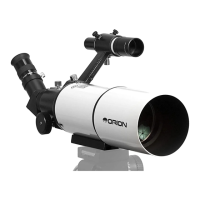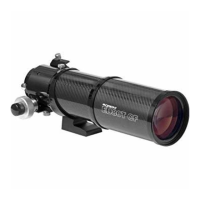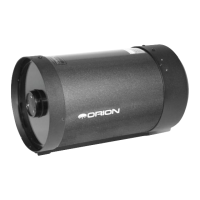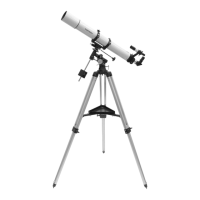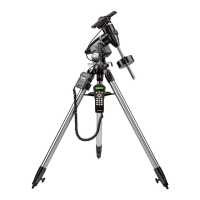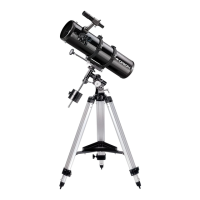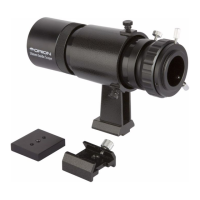11
Using the MoonMap 260
The MoonMap 260 is a great observing
aid to use when viewing the Moon with
your FunScope. With it you will be able
to identify a myriad of lunar features.
Because the view in the FunScope is
upside down, you may nd it useful to
rotate the MoonMap so the image on the
map matches what you see in the tele-
scope. Concentrate each evening on the
“terminator”, where the illuminated por-
tion of the lunar surface meets the dark
portion. Due to the low angle at which
sunlight strikes this portion of the moon,
shadows cast by crater walls and other
high-elevation features are elongated,
thereby making such features stand out
more vividly. Using a red ashlight (sold
separately) to read the MoonMap in the
dark will be helpful; the red light will not
spoil your eyes’ dark adaptation.
What to Expect
So what will you see with your FunScope? You should be able to see bands on
Jupiter, the rings of Saturn, myriad craters on the Moon, and many bright deep-sky
nebulas and star clusters. Do not expect to see color as you do in astrophoto-
graphs, since those are taken with long-exposure cameras that can record faint
color. Our eyes are not sensitive enough to see color in faint deep-sky objects
except in a few of the brightest ones. Remember that you are seeing these objects
using your own telescope with your own eyes! The object you see in your eyepiece
is in real-time, and not some conveniently provided image from an expensive space
probe or astrophotography rig. And if you take the initiative to learn a little about
what you are looking at, that will greatly enhance your observing experience.
Objects to Observe
A. TheMoon
With its rocky surface, the Moon is one of the easiest and most interesting
targets to view with your telescope. Lunar craters, marias, and even mountain
ranges can all be clearly seen from a distance of 238,000 miles away! With its
ever-changing phases, you’ll get a different view of the Moon every night. The
best time to observe our one and only natural satellite is during a partial phase,
that is, when the Moon is NOT full. During partial phases, shadows are cast on
the surface, which reveal more detail, especially right along the border between
the dark and light portions of the disk (called the “terminator”). A full Moon is
Figure 6. The 2x Barlow lens is inserted
in the focuser, then an eyepiece is
inserted into the Barlow, as shown. The
Barlow lens double the magnication of
any eyepiece used.
Eyepiece
Barlow
lens
Focuser
